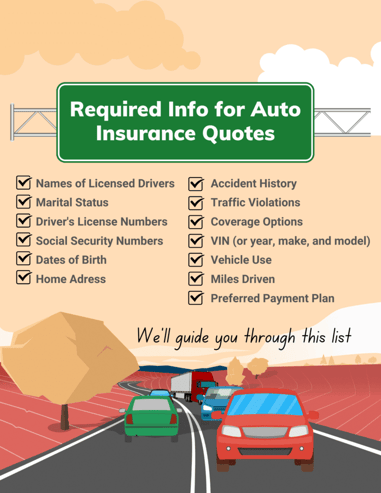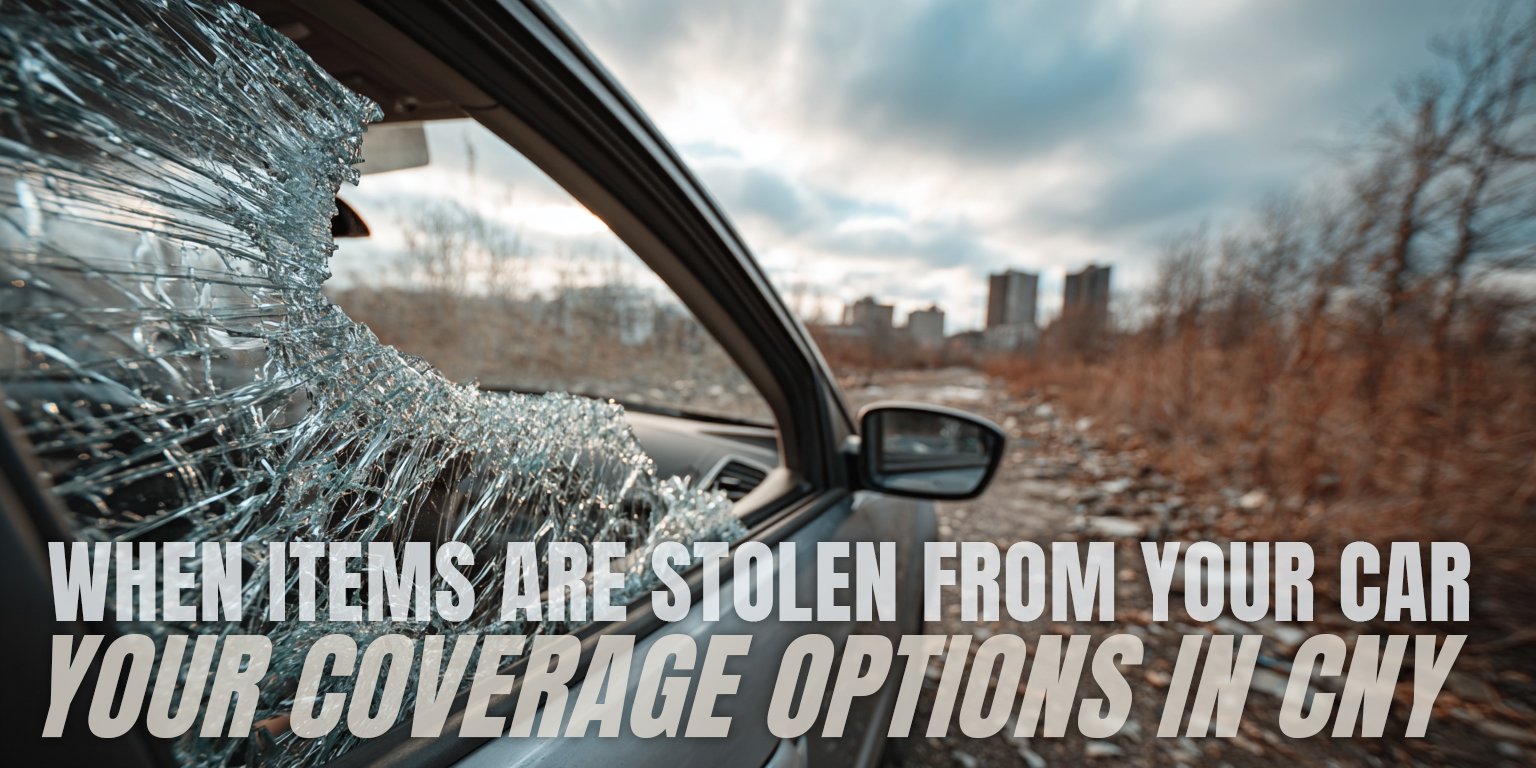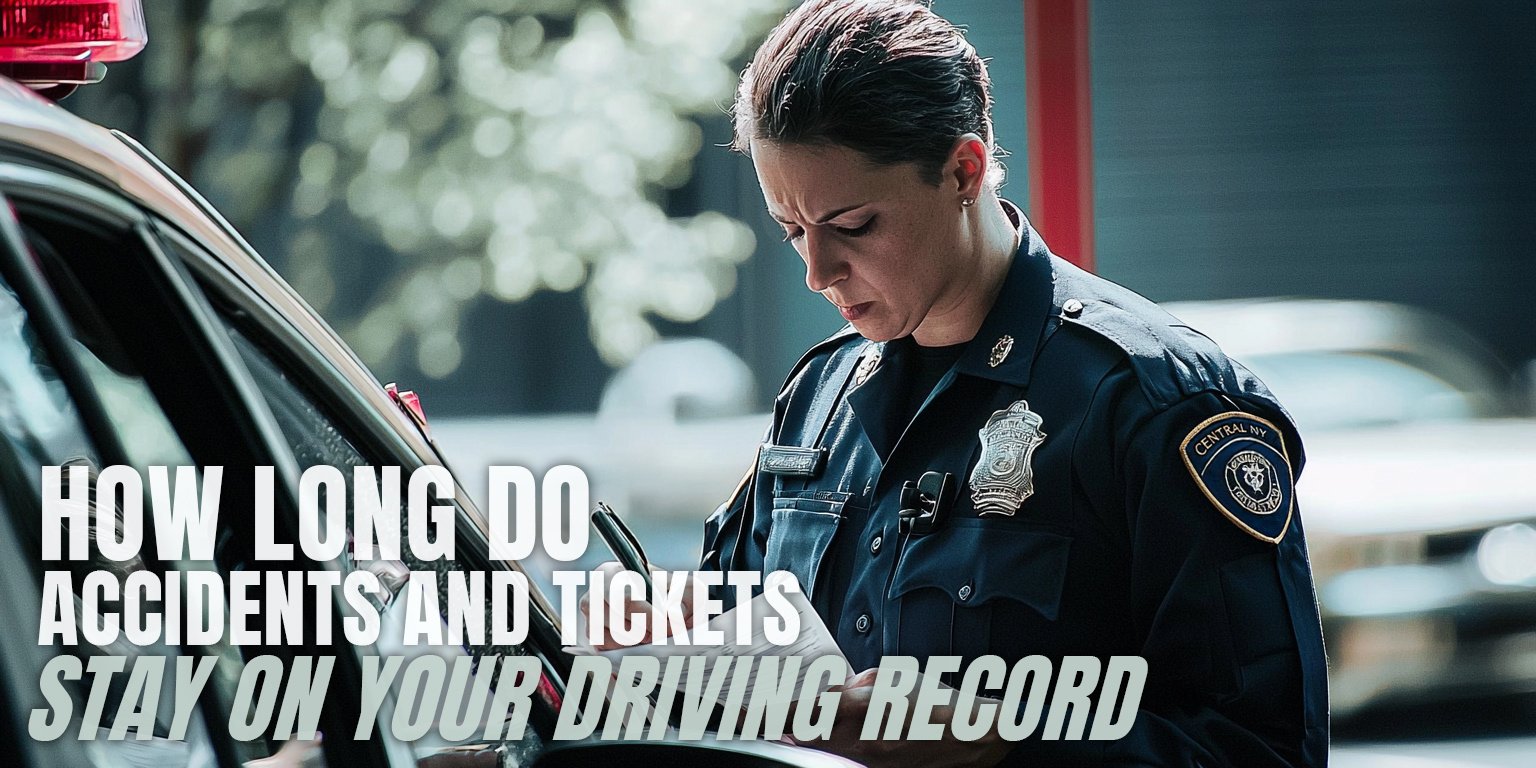
When requesting an auto insurance quote, you will be asked to provide a few pieces of personal information. This is straightforward if you live alone and have one vehicle, but if there are other drivers and vehicles in your household, you’ll first want to gather all their info in addition to yours.
We know that getting an auto insurance quote can feel like a game of 20 Questions or the first visit to a new doctor, where you’re asked for a ton of personal information before you get a diagnosis.
But don’t worry. Your weight and cholesterol levels are no concern to us!
Insurance is confusing enough. And being required to supply a stack of info about your personal life only adds levels of frustration. We feel your pain.
As an insurance agency that specializes in personal lines, we’ve written many auto policies for Central New Yorkers over the years. But to write the most accurate auto insurance quote possible, we need the personal info of all household members.
We’d rather give you a price that, if desirable, you can buy with no surprises, as opposed to a half-baked quote that is subject to change later.
In this article, you’ll learn why your personal info is required to receive an accurate auto insurance quote, as well as what that info consists of. Having the required details on hand will smooth the quote process and get you behind the wheel so you can skip to the fun part.
Types of Personal Information Required for an Auto Insurance Quote
Names of All Licensed Drivers
The legal names of all licensed drivers must be provided. This includes drivers who have separate insurance. It also includes drivers who do not have a vehicle of their own but are still licensed.
And make sure you add “Jr” or “III” for individuals with those suffixes. That way, if Thomas Sr had a speeding ticket, it wouldn’t be wrongly applied to Thomas Jr, who drives responsibly.
Marital Status
Married drivers tend to receive lower rates. Marital status also serves as a check and balance. If you’re married, but your spouse lives at a different address, you’ll give extra information about this.
Separated couples, who are not yet divorced, also need to disclose that fact. A separated marital status indicates that there is a spouse who lives elsewhere.
Driver’s License Numbers
If the license is a New York one, then you’ll give the 9-digit driver’s license number for each person. It’s okay if you or someone else has an out-of-state license. You’ll need to have the unique ID number and know its state!
The driver’s license numbers are used to find out specific information. That includes the motor vehicle report for each driver, which an agent needs to sell a policy.
Social Security Numbers
The social security numbers (SSN) are for the one or two individuals who will be the policy owners. Policy owners are also called Named Insureds. The SSN links to information about your financial and insurance claims history.
 It’s essential to set the record straight on those two points. The financial history, in particular, is not about your credit score. In fact, it’s not a hard credit pull and doesn’t show up on your credit report. It’s also not something we see specific information about on our end. The information is used behind the scenes, and the outcome is applied to the final insurance cost.
It’s essential to set the record straight on those two points. The financial history, in particular, is not about your credit score. In fact, it’s not a hard credit pull and doesn’t show up on your credit report. It’s also not something we see specific information about on our end. The information is used behind the scenes, and the outcome is applied to the final insurance cost.
With all else being equal, our experience has shown that those with less debt tend to have lower insurance premiums.
Dates of Birth
Since age plays a significant role in insurance rates, the date of birth (DOB) for every driver is mandatory. Be sure to know the exact one for every driver.
Home Address
You’ll need your current address and any other home addresses within the past three years. Your address establishes precisely where your vehicles are kept. If one or more of your cars are kept elsewhere, you’ll be asked for that address too.
Your mailing address can be different from your street address. Yet, the street address must also be provided because you still can’t fit a car into a PO Box since last we checked.
Your Driving, Accident, and Insurance History
Tickets and Accidents
Insurance carriers will review the past five years of driving history for each driver. Any accidents or tickets should be disclosed. Even if you were not at fault in the accident, you still want to mention it. Doing so will help keep you from being negatively rated for an accident you did not cause.
Current Insurance Coverage
Your current insurance coverage provides us with insight into your policy and premium. We’ll ask for the name of your insurance company. That way, if it’s a carrier we also use, we won’t include them when sourcing quotes.
For accurate comparisons, knowing your current coverage is valuable. If you have $250 deductibles on your existing policy, we wouldn’t want to use $500 in your quote. Ideally, we will have matched or improved what you have now.
You can email us your policy’s coverage pages to make things easy.
What if I Don’t Have Insurance?
But suppose you are not currently insured or have been uninsured for more than 30 days. In that case, the availability of auto insurance carriers will be fewer. However, as an independent insurance agency, we work with insurers that can help us in this area.
Details About the Vehicles
Which Vehicles Do You Want to Insure?
We have finally arrived at the reason why you’re here in the first place: your iron horse!
The easiest way for us to locate accurate information about your vehicles is to provide us with something called the VIN. VIN stands for “vehicle identification number,” and every vehicle in the United States has one. Cars or trucks manufactured after 1980 have a 17-character VIN.
You’ll find the VIN in several places throughout the vehicle. But the most common place is on the lower-left corner of your dashboard in front of the steering wheel.
While VINs eliminate the likelihood of a change in the quoted rate, we can still help if you don’t have them. The year, make, and model go a long way toward providing an accurate quoted rate. Knowing it’s a 2019 Honda Pilot EX-L instead of just a “newer-ish Honda SUV” makes a big difference!
How the Vehicle is Used
How far is your commute to work? Are you a stay-at-home mom? Are you a REALTOR® who uses a car when showing houses? Do you drive for Uber? Those are the types of questions you’ll be asked to answer about how each vehicle is used.
Annual Miles Driven
You will need to know how many miles per year are added to each vehicle. While every carrier has its own threshold, vehicles that are driven less than 7,500 miles per year usually get lower rates.
Your Preferred Way of Paying for Auto Insurance
Payment Plan
Your payment plan could end up being the ultimate differentiator. Insurance companies use their payment plans as an added competitive measure. Depending on your specific insurance plan, sizeable auto insurance discounts may be available.
The most common plans include:
- Paid in Full (the entire premium paid in one lump sum).
- Monthly EFT (your payments are debited from your checking account automatically).
- Monthly Bill. This means you receive a paper (or electronic) bill and manually pay it by personal check, a credit card, or through your bank’s bill pay system.
We Can Help You Get Accurate Auto Insurance Quotes
You now know what information you will need to complete your auto insurance purchase. But be sure to consult this article before attempting to get auto insurance quotes, or you’ll be ill-prepared, which will make for a challenging quote experience rife with inaccuracies.
Your next step is to become more familiar with the auto policy’s standard insurance coverage.
You can do that by learning about what bodily injury coverage means, digging into the differences between comprehensive and collision coverage, or reading our auto insurance overview.
Even if you’re not familiar with some of the details listed in this article and would like to move forward with a quote, we’re happy to help. We’ve worked with many quote seekers who had difficulty completing this step on their own.
We can guide you to the right info so you’re not left unprepared.
Simply click the Get a Quote button below to get started.
Topics:



























